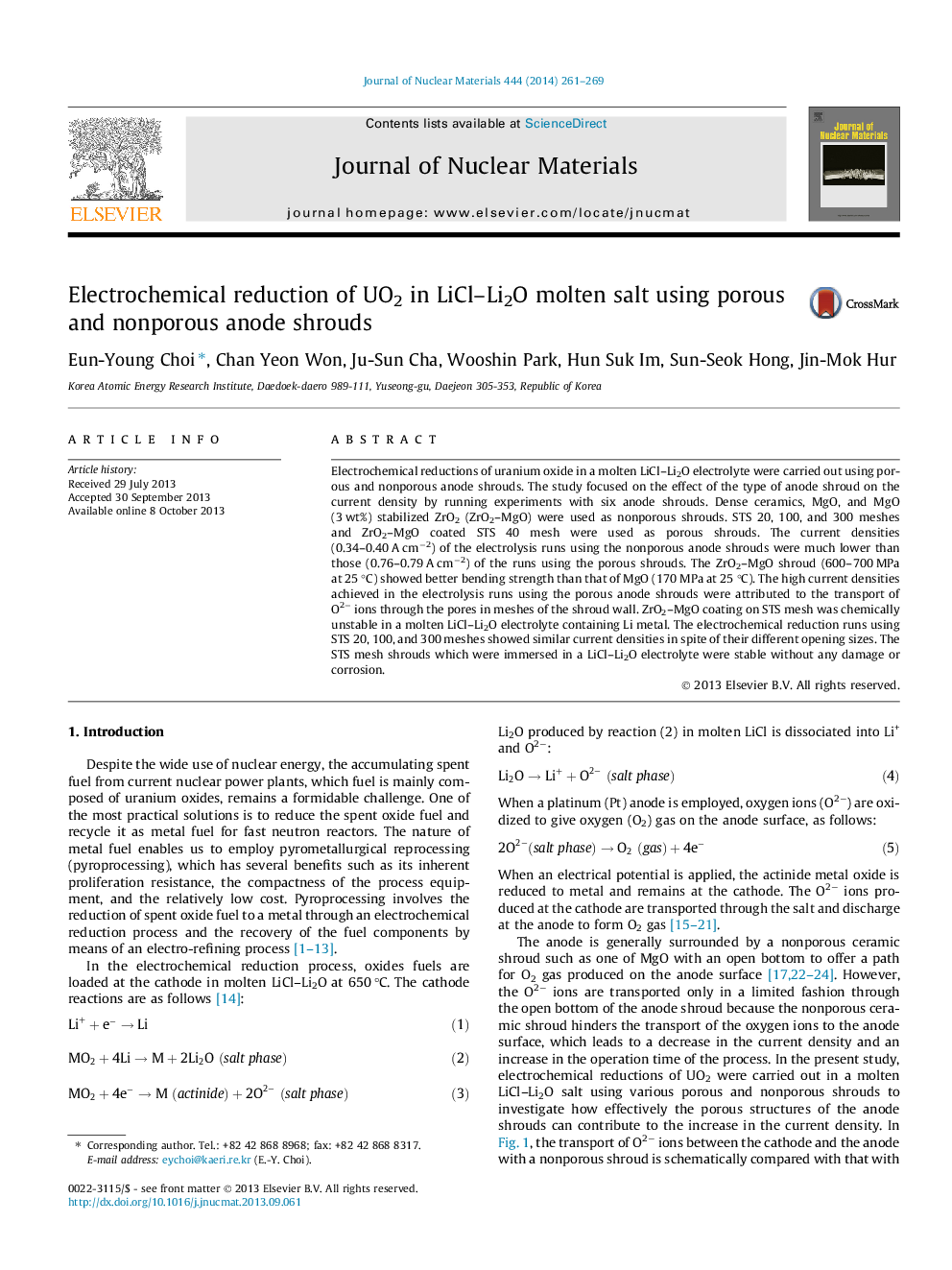| Article ID | Journal | Published Year | Pages | File Type |
|---|---|---|---|---|
| 7968430 | Journal of Nuclear Materials | 2014 | 9 Pages |
Abstract
Electrochemical reductions of uranium oxide in a molten LiCl-Li2O electrolyte were carried out using porous and nonporous anode shrouds. The study focused on the effect of the type of anode shroud on the current density by running experiments with six anode shrouds. Dense ceramics, MgO, and MgO (3 wt%) stabilized ZrO2 (ZrO2-MgO) were used as nonporous shrouds. STS 20, 100, and 300 meshes and ZrO2-MgO coated STS 40 mesh were used as porous shrouds. The current densities (0.34-0.40 A cmâ2) of the electrolysis runs using the nonporous anode shrouds were much lower than those (0.76-0.79 A cmâ2) of the runs using the porous shrouds. The ZrO2-MgO shroud (600-700 MPa at 25 °C) showed better bending strength than that of MgO (170 MPa at 25 °C). The high current densities achieved in the electrolysis runs using the porous anode shrouds were attributed to the transport of O2â ions through the pores in meshes of the shroud wall. ZrO2-MgO coating on STS mesh was chemically unstable in a molten LiCl-Li2O electrolyte containing Li metal. The electrochemical reduction runs using STS 20, 100, and 300 meshes showed similar current densities in spite of their different opening sizes. The STS mesh shrouds which were immersed in a LiCl-Li2O electrolyte were stable without any damage or corrosion.
Related Topics
Physical Sciences and Engineering
Energy
Nuclear Energy and Engineering
Authors
Eun-Young Choi, Chan Yeon Won, Ju-Sun Cha, Wooshin Park, Hun Suk Im, Sun-Seok Hong, Jin-Mok Hur,
